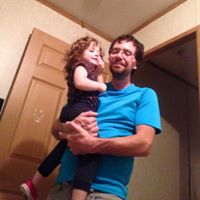Robert Luke Secrest
age ~48
from Thornville, OH
- Also known as:
-
- Robert Lu Secrest
- Robert Clark Secrest
- Robert L Secrest
- Robert C Secrest
- Robert I Secrest
- Luke R Secrest
- Robert C Secerst
- Robert Member
- Robertluke Secrest
Robert Secrest Phones & Addresses
- Thornville, OH
- 1633 Thornwood Dr, Heath, OH 43056
- Bradenton, FL
- Pataskala, OH
- Etna, OH
- Blacklick, OH
- Columbus, OH
- Reynoldsburg, OH
- Hebron, OH
Amazon
![[ Robert T. Secrest ] By Surhone, Lambert M ( Author ) [ 2011 ) [ Paperback ] [ Robert T. Secrest ] By Surhone, Lambert M ( Author ) [ 2011 ) [ Paperback ]](/img/not-found.png)
[ Robert T. Secrest ] By Surhone, Lambert M ( Author ) [ 2011 ) [ Paperback ]
view sourceAuthor
Lambert M Surhone
Binding
Paperback
Publisher
Betascript Publishing
ISBN #
3
Name / Title
Company / Classification
Phones & Addresses
ADVANCED BASEMENT PRODUCTS, INC
THE BASEMENT GUYS OF CINCINNATI, LLC
ADVANCED FOUNDATION SOLUTIONS, LLC
GOLD STAR VIDEO, INC
Reynoldsburg, OH
THE BASEMENT GUYS OF TOLEDO, LLC
Vice President
Carefree Cars, Inc
7667 15 St E, Sarasota, FL 34243
Principal
Secrest Properties LLC
Nonresidential Building Operator
Nonresidential Building Operator
7017 Americana Pkwy, Reynoldsburg, OH 43068
Us Patents
-
Carbon Fiber Wall Reinforcement System And A Method For Its Use
view source -
US Patent:20120180412, Jul 19, 2012
-
Filed:Jan 13, 2011
-
Appl. No.:13/006408
-
Inventors:Robert Luke Secrest - Reynoldsburg OH, US
-
International Classification:E04B 1/92
E04H 9/00 -
US Classification:52222, 527413
-
Abstract:The basement wall reinforcement system comprises carbon fiber materials securely mounted to the wall being reinforced as well as to structural components at both the top and bottom of the wall. These additional connections at the top and bottom of the wall increase the capacity of the carbon fiber to prevent bowing and cracking by transferring lateral forces from the wall to these structural components. Such structural components can include foundations, basement floors, sill plates, rim joists and floor joists. The carbon fiber can be connected to these structural components by pins, epoxies and specially designed brackets.
-
Drainage System For Use In Basements And A Method For Its Installation And Use
view source -
US Patent:20120227826, Sep 13, 2012
-
Filed:Mar 7, 2011
-
Appl. No.:13/041953
-
Inventors:Robert Luke Secrest - Reynoldsburg OH, US
Dan E. Reed - Aurora OH, US -
International Classification:F16L 5/00
-
US Classification:137 1501, 137362
-
Abstract:A basement drainage system and method for its use comprising a combination of floor drains and poly drains, wherein each can transport water to one or more sump basins to be pumped out of a basement and away from a building. This basement drainage system can effectively remove ground water located below a basement floor as well as water that collect on the surface of the basement floor.
-
Device For Stabilizing And Rep Airing Cracks In Concrete Structures And A Method For Its Use
view source -
US Patent:20210025186, Jan 28, 2021
-
Filed:Oct 12, 2020
-
Appl. No.:17/068415
-
Inventors:Robert Luke Secrest - Thornville OH, US
Jared A. Jones - Thornville OH, US
Gary L. Fox - Circleville OH, US
Robert K. Smith - Ancaster, CA -
International Classification:E04G 23/02
-
Abstract:The present concrete crack repair device (CCRD) can be comprised of two nodules connected by an elongated strip wherein the elongated strip can be narrower than the nodules in at least one plane. Both the elongated strip and the nodules can comprise carbon fibers wherein most of the carbon fibers are located within the same plane maximizing the tensile strength of the device. Installation of the CCRD can be performed by drilling holes into the surface of the concrete on either side of the crack and cutting a slot in the surface of the concrete between the two holes, or adding the holes after the slot has been cut, wherein the slot and holes are located in a line that is roughly perpendicular to the crack. The CCRD can then be installed by placing each nodule in a hole and the elongated strip within the slot.
-
Device For Stabilizing And Repairing Cracks In Concrete Structures And A Method For Its Use
view source -
US Patent:20190010719, Jan 10, 2019
-
Filed:Jan 9, 2018
-
Appl. No.:15/866424
-
Inventors:Robert Luke Secrest - Thornville OH, US
Jarred A. Jones - Thornville OH, US
Gary L. Fox - Circleville OH, US
Robert K. Smith - Ancaster, CA -
International Classification:E04G 23/02
-
Abstract:The present concrete crack repair device (CCRD) can be comprised of two nodules connected by an elongated strip wherein the elongated strip can be narrower than the nodules in at least one plane. Both the elongated strip and the nodules can comprise carbon fibers wherein most of the carbon fibers are located within the same plane maximizing the tensile strength of the device. Installation of the CCRD can be performed by drilling holes into the surface of the concrete on either side of the crack and cutting a slot in the surface of the concrete between the two holes, or adding the holes after the slot has been cut, wherein the slot and holes are located in a line that is roughly perpendicular to the crack. The CCRD can then be installed by placing each nodule in a hole and the elongated strip within the slot.
-
Drainage System For Use In Basements And A Method For Its Installation And Use
view source -
US Patent:20140166129, Jun 19, 2014
-
Filed:Sep 12, 2013
-
Appl. No.:14/025634
-
Inventors:Robert Luke Secrest - Reynoldsburg OH, US
Dan E. Reed - Aurora OH, US -
International Classification:E04B 1/70
-
US Classification:137362, 29428
-
Abstract:A basement drainage system and method for its use comprising a combination of floor drains, poly drains and an exterior drainage system, wherein the exterior drainage system and poly drains can prevent water from entering the basement and wherein one or more floor drains can each transport water to one or more sump basins to be pumped out of a basement and away from a building. The present basement drainage system can effectively remove ground water located below a basement floor as well as water collected on the surface of the basement floor, and prevent ground water from entering the basement.
-
Carbon Fiber Wall Reinforcement System And A Method For Its Use
view source -
US Patent:20140083043, Mar 27, 2014
-
Filed:Nov 18, 2013
-
Appl. No.:14/083364
-
Inventors:Robert Luke Secrest - Thornville OH, US
-
International Classification:E04B 1/92
E04B 1/38 -
US Classification:52698
-
Abstract:The basement wall reinforcement system comprises carbon fiber materials securely mounted to the wall being reinforced as well as to structural components at both the top and bottom of the wall. These additional connections at the top and bottom of the wall increase the capacity of the carbon fiber to prevent bowing and cracking by transferring lateral forces from the wall to these structural components. Such structural components can include foundations, basement floors, sill plates, rim joists and floor joists. The carbon fiber can be connected to these structural components by pins, epoxies and specially designed brackets.
Resumes

Robert Secrest
view source
Robert Secrest
view source
Robert Secrest
view source
Robert Secrest
view source
Robert Secrest
view sourceClassmates

Robert Secrest
view sourceSchools:
Copperas Cove High School Copperas Cove TX 1988-1992
Community:
Katrina Clarke, Franklin Gutierrez, Tini Kuehn, Jim Bob, Wesley Williams, Tony Smith, Stacy Crane

Robert Secrest, South Hig...
view source
Robert Secrest, Douglas H...
view source
Lee Elementary School, Po...
view sourceGraduates:
Robert Secrest (1953-1957),
Loi Tran (1976-1978),
Jasmine Braziel (2004-2008),
Tabitha Berwick (1990-1994)
Loi Tran (1976-1978),
Jasmine Braziel (2004-2008),
Tabitha Berwick (1990-1994)

South High School, Columb...
view sourceGraduates:
Robert Secrest (1953-1957),
sheila van van gundy (1966-1970),
LARRY LARRY R GATES (1978-1982),
frances carroll (1969-1973)
sheila van van gundy (1966-1970),
LARRY LARRY R GATES (1978-1982),
frances carroll (1969-1973)

Douglas High School, Doug...
view sourceGraduates:
Robert Secrest (1959-1963),
Serena Dale (1984-1988),
Roxann Barker (1978-1982),
Kelly Olson (1982-1986)
Serena Dale (1984-1988),
Roxann Barker (1978-1982),
Kelly Olson (1982-1986)
Plaxo

Robert Secrest
view sourceI have been a marketer since age 18. I have been an entrepreneur sice 18. I love teaching it, learning more about it and living it.
Myspace
Youtube
Flickr

Robert Secrest
view source
Robert Secrest
view source
Robert Secrest
view source
Robert Secrest
view source
Robert Secrest
view source
Robert Secrest
view source
Robert Secrest
view source
Jhoy Kez Robert Secrest
view sourceGoogleplus

Robert Secrest

Robert Secrest

Robert Secrest
Get Report for Robert Luke Secrest from Thornville, OH, age ~48














